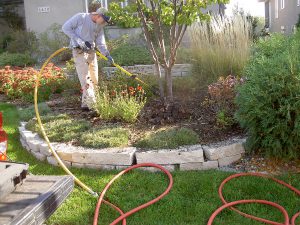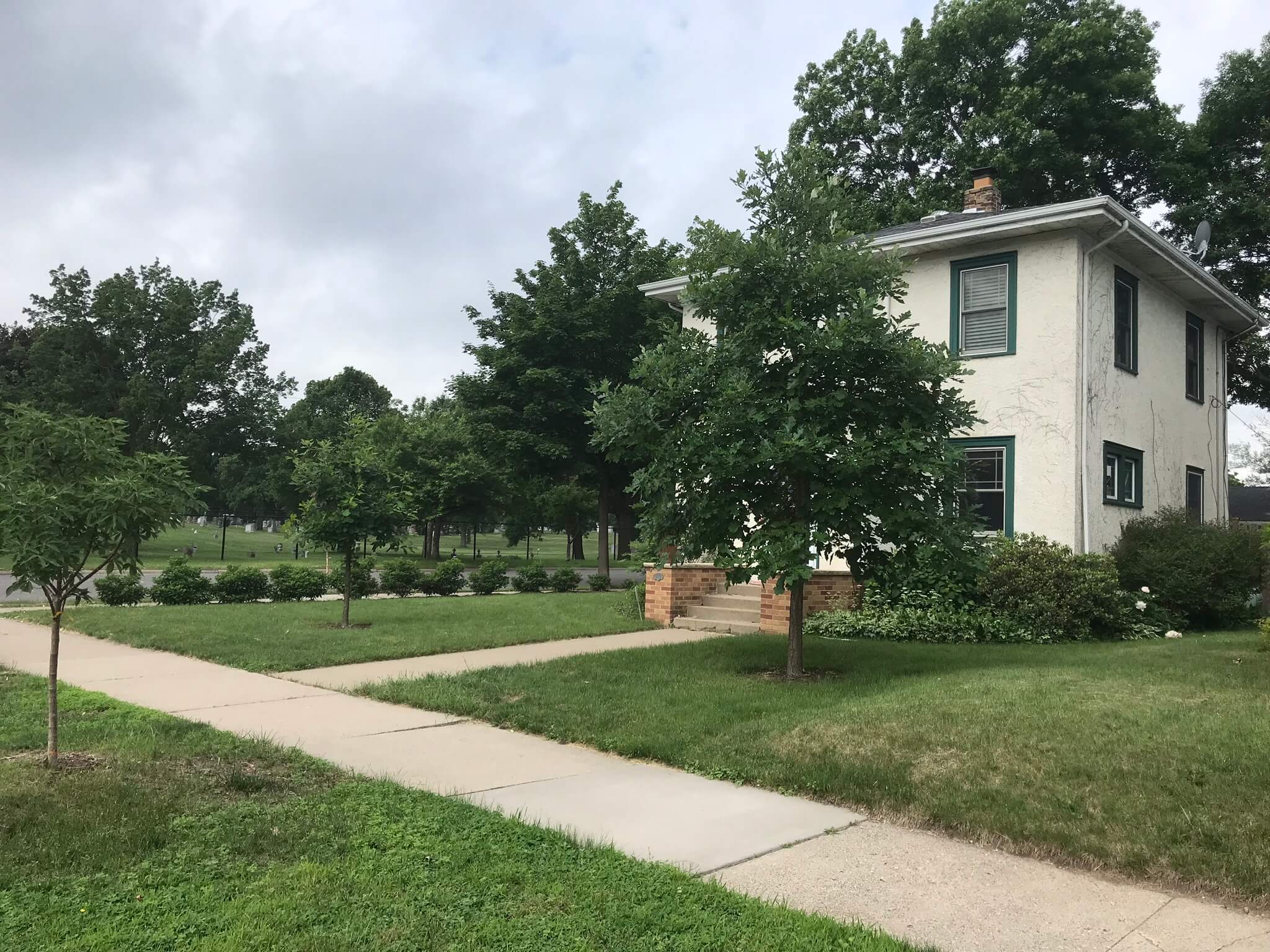What Is Soil Fertility, and Why Does It Matter?
When caring for trees, we often focus our efforts on what we can see: the canopy. Pruning is an important tool to manage trees, but ignoring what’s happening below ground is leaving out half the picture. Tree roots are the living, breathing, resource collecting first step in the process of photosynthesis. Ensuring they have everything they need is critical to maintaining and improving tree health.

The difference the right conditions can make in growth rate- both trees were the same size when planted.
How do roots work?
Roots connect to the leaves of a tree by very small tubes in the sapwood, from top to bottom. Water evaporating from leaves creates suction, which carries all the way down to the roots and draws water in from the soil. Dissolved in this water are some of the minerals and nutrients the tree needs to grow new leaves, create new wood, and protect itself. The remaining nutrients need to be forced into the roots using a process that requires oxygen, like how we breathe. This sets up a list of soil conditions necessary for roots to thrive:
- The necessary nutrients, in enough quantity and in the correct chemical form to be absorbable
- Small pore spaces filled with water
- Large pore spaces filled with air

Chlorosis is often caused by nutrient deficiencies.
Nutrients
All plants need nitrogen, phosphorous, and potassium (macronutrients), and other elements in smaller amounts (micronutrients). These elements are generally present in the soil in absorbable forms. By definition, our urban and suburban soils are disturbed. These disturbances lead to soils that lack enough nutrients or nutrients in a chemical form that roots can’t absorb.
Pore Space
Like nutrients, trees need pore spaces of different sizes and quantities. Macropores are large spaces that fill with air, allowing the roots to breathe. Micropores are smaller spaces that retain water after rains or watering stops. In prolonged floods, macropores fill with water and can lead to roots suffocating. In droughts, even the micropores can drain leading to soil hardening and compacting. Soil compaction can also occur from driving or even walking over root systems, crushing the macropores. Soils without the necessary pore spaces are difficult places for roots to live. This can lead to reduced root function and tree decline.
How can we help?
Now that we understand what roots need, we can provide better growing conditions. We have several methods to address nutrient deficiencies, de-compact pore space and incorporate organic matter.
Fertilization

Vineland Plant Healthcare Technician Ed Hayes fertilizing a ginkgo (Ginkgo biloba).
If we suspect a tree is not getting the nutrients it needs, fertilization is one of the most effective tools. Applying a liquid fertilizer allows for quick green-up of trees with nutrient deficiencies. Fertilizing can also help young trees adapt to their new environment. In smaller doses fertilization can help maintain the condition of larger, established trees. We also have granular options, which have the added plus of containing organic matter.

Using an Air Spade to excavate around the base of a Japanese tree lilac (Syringa reticulata).
Decompaction and Soil Amendments
After a compaction event (construction, large gathering, flooding), we can use air excavation to de-compact the soil. This entails removing any sod, mulch, or ground cover, and excavating trenches with compressed air. This air focuses on breaking up compaction without damaging the tree roots. These trenches are then refilled with the loosened soil and a fertilizer high in organic matter. This low-nitrogen fertilizer provides less of a push to grow, which is better for trees stressed by compaction. Also, adding organic matter feeds the micro-organisms that will continue the de-compaction.
Soils form the base in which trees grow. Maintaining the soil is one of the easiest and most effective ways to improve the health of any tree. This is true for brand-new additions to a yard or a veteran of many decades. Contact our ISA Certified Master Arborists to learn about soil and condition assessment.

